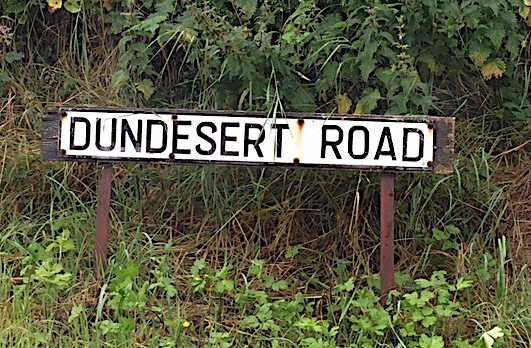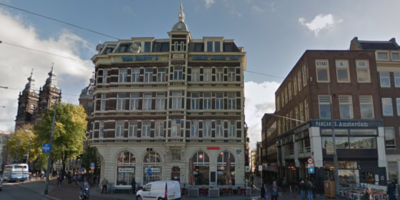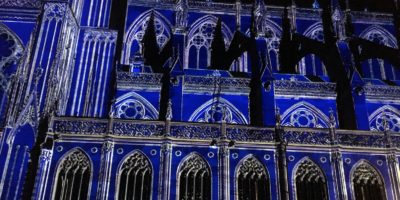Returning from a funeral in Northern Ireland last Thursday, my wife and I came across an unremarkable road sign on the A26, just before turning off to Belfast International Airport. It simply read ‘Dundesert Rd’, yet pointed to the remarkable but forgotten influence of both Copts and Celts in shaping European civilisation.
For Dundesert, according to some scholars, was the burial place of some early migrants from North Africa to Europe: the ‘Seven monks of Egypt’, referred to in an eighth century Irish litany, the Litany of Pilgrim Saints.
The prefix ‘Dun’ is Celtic, meaning ‘fort’ as in the Scottish Gaelic name Dùn Èideann for Edinburgh (hence Dunedin, the New Zealand city settled by Scots).
The term ‘Desert’ referring to the remote location of a monastery is believed by such scholars to have been brought to Ireland from Egypt early in the Christian era. Coptic monks brought with them a tradition of founding monasteries in remote desert locations. While deserts are not found in Ireland or the British Isles, Celtic monks were inspired by their Coptic brothers and mentors to use terms like ‘desert’, ‘disert’ and ‘dysert’ for name places in Ireland, Wales and Scotland: e.g. Dundesert, Disertmartin, Dysert O’Dea, Dyserth, Dysart and Killadysert.
(‘Copt’ refers to the ethnic descendants of ancient pre-Christian and pre-Arab Egyptians, derived from the Coptic gyptios or kyptaios.)
Cells and towers
Other striking similarities have been noted between the worlds of the Desert Fathers in Egypt and of the Celtic monastics. Traces of the eastern origins of Celtic monastic life can be found in monastic rules, the beehive architecture of monks’ cells, the round towers and layout of monastic communities. Some Celtic manuscript illuminations are clearly copied from Coptic sources (e.g. in the Book of Kells and the Lichfield Gospels).
Travel between Egypt and Ireland was evidently two-way. A copy of a guidebook written for Irish monks travelling to Egypt still survives in the Bibliotheque Nationale in Paris.
This Coptic-Celtic link generally lies beyond the horizon of both Catholics and Protestants; the former educated from a Roman perspective and the latter focused on post-Reformation history. St Patrick, for example, patron saint of Irish Catholics, is depicted anachronistically in statues, paintings and stained glass windows wearing a Catholic bishop’s mitre when in reality Celtic bishops wore crowns up until the sixteenth century. Ironically, Patrick was neither Irish nor Catholic.
We easily miss therefore the most significant contribution of both the Copts and the Celts to the development of Europe as the pagan Roman empire was crumbling, as we discovered on our recent Continental Heritage Tour.
Teachers and disciplers
Repeatedly we encountered Coptic saints whose heroic witness to the gospel of Jesus was legendary in early Christian Europe. On day one, we ‘met’ St Catherine, a young Coptic woman evangelist from Alexandria who fearlessly led Caesar’s wife to faith in Jesus in the late 3rd century. Her reward was to be martyred on a torture wheel (hence the ‘Catherine wheel’ firework). The Hoog Catharijne shopping centre in Utrecht, the Netherlands, was built on the former site of a convent named after Catherine.
In Zurich we came across the siblings Felix and Regula, the city’s patron saints, members of the Theban Legion from Upper Egypt, beheaded for their faith at the mouth of the Limmat River about the same time as Catherine’s martyrdom. Later a convent and a chapel were built for pilgrims venerating their memory. Later still, Charlemagne built the Grossmunster Cathedral on their supposed burial site, around which the city eventually grew.
As related in last week’s WW, our visit to the abbey in St Maurice south of Montreux confronted us with the story of the martyrdom of the Theban Legion, whose members chose faithfulness to Christ over false loyalty to the emperor. This story inspired countless believers across Europe, and also the names of people, places and brotherhoods from St Moritz to Tallinn.
Others we ‘met’ representing Celtic missions to the continent included Willibrord and Boniface, both influenced more by Celtic backgrounds than Roman historians generally allow; and Columbanus, Gallus, Beatus and Kilian, some of whom founded monasteries growing into the thousands in today’s France, Switzerland, Austria, Germany and Italy. They became known as the ‘teachers of kings and disciplers of nations’ as advisors to rulers like Charlemagne (Alcuin of York), and his grandson, Charles the Bald (Johannes Scottus Eriugena – literally: born in Ireland).
Last week’s funeral was of our dear Scottish friend and colleague, Iain Muir. As the father and leader of YWAM in Africa since the 1970’s, he too was a ‘teacher of kings and discipler of nations’, continuing in a long tradition of Celtic mission.
Till next week,




Hi Jeff. I found this writing very interesting. There is a lot of things back in the history we can learn from and get explanation for things we have just accepted as de facto. Christians have really changed the history of Europe! We still do. Thank you for this inspiring glimpse to history.
Hi Jeff,
I see your interest in Celtic Christianity isn’t waning…!!!
Are you considering another Celtic Christianity tour? (I think you did one a couple of years ago which we missed out on).
We made a quick trip to Ireland 2 yrs ago and visited Glenalough which whetted our appetite for more.
So, should you be setting up another tour, we’d love to tag along…???
Cheers,
John and Mary Clark (Auckland).
[…] celtica che si è goduta un risveglio nei pochi decenni recenti. Come l’ho scritto prima, l’influenza delle origini orientali della vita monastica celtica può essere trovata nelle […]
[…] Celtic spirituality which has enjoyed a revival over the past few decades. As I have written earlier, the influence of the eastern origins of Celtic monastic life can be found in monastic rules, […]